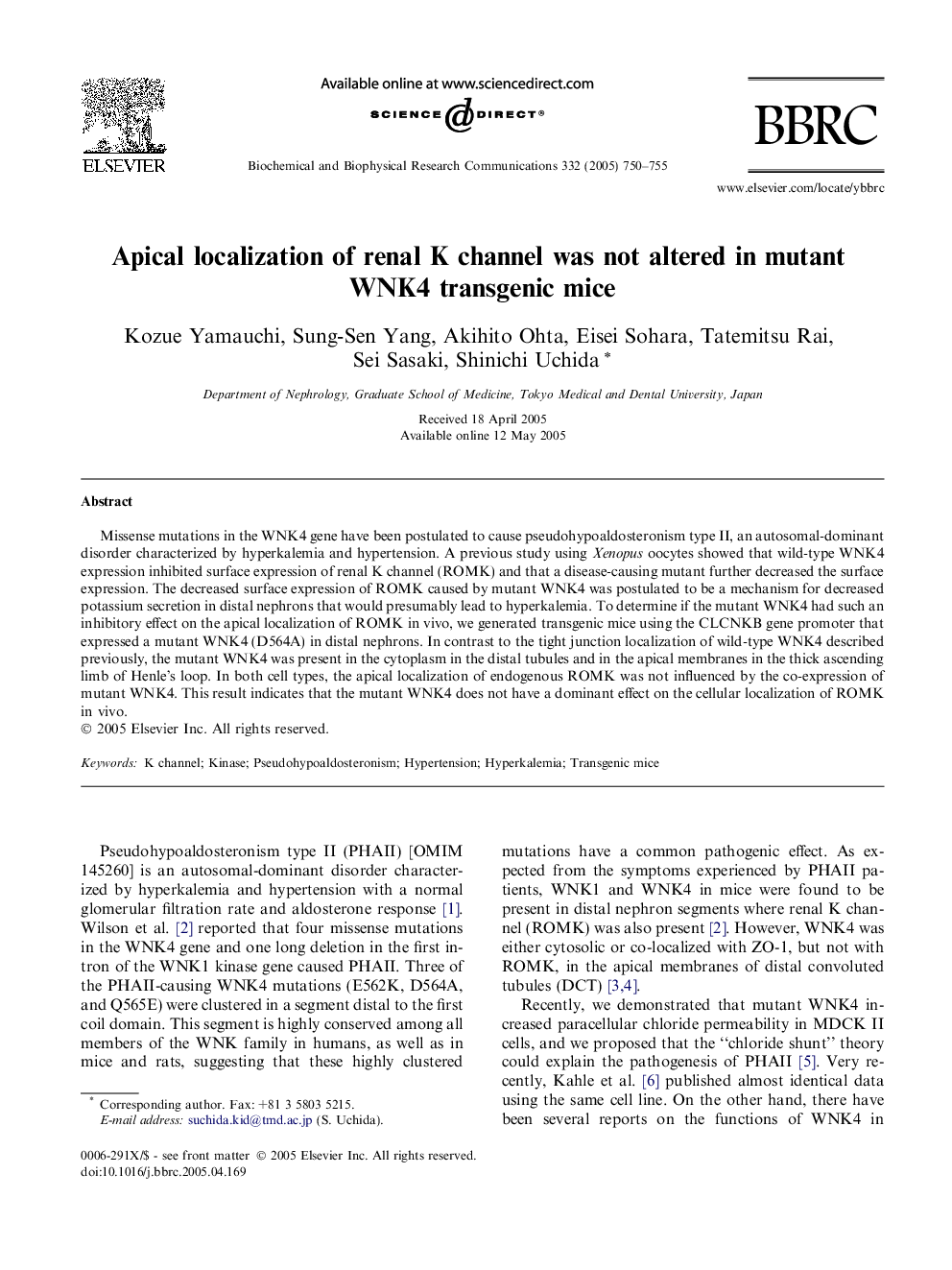| Article ID | Journal | Published Year | Pages | File Type |
|---|---|---|---|---|
| 10767696 | Biochemical and Biophysical Research Communications | 2005 | 6 Pages |
Abstract
Missense mutations in the WNK4 gene have been postulated to cause pseudohypoaldosteronism type II, an autosomal-dominant disorder characterized by hyperkalemia and hypertension. A previous study using Xenopus oocytes showed that wild-type WNK4 expression inhibited surface expression of renal K channel (ROMK) and that a disease-causing mutant further decreased the surface expression. The decreased surface expression of ROMK caused by mutant WNK4 was postulated to be a mechanism for decreased potassium secretion in distal nephrons that would presumably lead to hyperkalemia. To determine if the mutant WNK4 had such an inhibitory effect on the apical localization of ROMK in vivo, we generated transgenic mice using the CLCNKB gene promoter that expressed a mutant WNK4 (D564A) in distal nephrons. In contrast to the tight junction localization of wild-type WNK4 described previously, the mutant WNK4 was present in the cytoplasm in the distal tubules and in the apical membranes in the thick ascending limb of Henle's loop. In both cell types, the apical localization of endogenous ROMK was not influenced by the co-expression of mutant WNK4. This result indicates that the mutant WNK4 does not have a dominant effect on the cellular localization of ROMK in vivo.
Related Topics
Life Sciences
Biochemistry, Genetics and Molecular Biology
Biochemistry
Authors
Kozue Yamauchi, Sung-Sen Yang, Akihito Ohta, Eisei Sohara, Tatemitsu Rai, Sei Sasaki, Shinichi Uchida,
